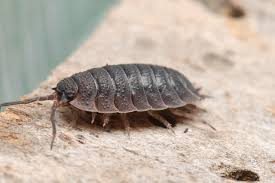Bug Hunt
Bug hunts are easy and so much fun. We have listed some things you might need to have an amazing bug hunt!!
- You’ll need a clear plastic tub or jam jar with air holes.
- Tweezers for picking up creepy crawlies.
- Camera or sketchbook and pencil for recording your findings, so you can search up what you found.
- Hand wash gel/ sanitiser, in case you touch anything.
- Magnifying glass. (optional)
- Check under rocks and logs to find smaller bugs but make sure to be careful.
When you find a bug make sure to put it back in its natural habitat as it is happy there.
We went on a bug hunt and it was so much fun and we made sure not to hurt the bugs whilst picking them up.
What you can expect to find:
 Ladybirds:
Ladybirds:
- Ladybirds are identical on both sides of their wings.
- You can’t tell a ladybird’s age by counting the spots on their wings.
- They are commonly yellow, orange, or red with small black spots on their wing covers, with black legs, heads and antennae.
- During flight, the wings of a ladybird will beat a staggering 85 times per second.
- An adult ladybird may eat over 5,000 aphids during its lifetime (about a year).
Centipede:
- Although centipede bites may be painful, they are rarely fatal.
- Centipedes have one pair of legs on each body segment, while millipedes have two pairs.
- Legs on the first body segment are not used for walking. They are modified into venomous fangs.
- Centipedes can detach some of the legs to escape from the predators.
- Centipedes are nocturnal creatures (active during the night).
 Woodlouse:
Woodlouse:
- Woodlice also known as slaters and pillbugs are terrestrial crustaceans.
- Most species of woodlouse can reach 0.1 to 1.1 inches in length.
- Their soft bodies are covered on the upper surface with a hard segmented shell.
- Woodlouse has segmented body and 14 legs.
- Most species of woodlouse are active during the night (nocturnal).
Caterpillar:
- A caterpillar has just one job – to eat.
- Caterpillars increase their body mass by as much as 1,000 times or more.
- A caterpillar’s first meal is usually its eggshell.
- A caterpillar has as many as 4,000 muscles in its body.
- Caterpillars have 6 legs, just as adult butterflies or moths do.
 Spider:
Spider:
- There are around 4000 different species of spider.
- Spiders don’t have antennae while insets do.
- Spiders are found on every continent of the world except Antarctica.
- An abnormal fear of spiders is called ‘arachnophobia’.
- Giant Huntsman spiders have leg-spans of around 30cm (12 in). These are not normally found in UK. A more common spider in UK is a Harvestman Spider. You may well find one in your hunt.
